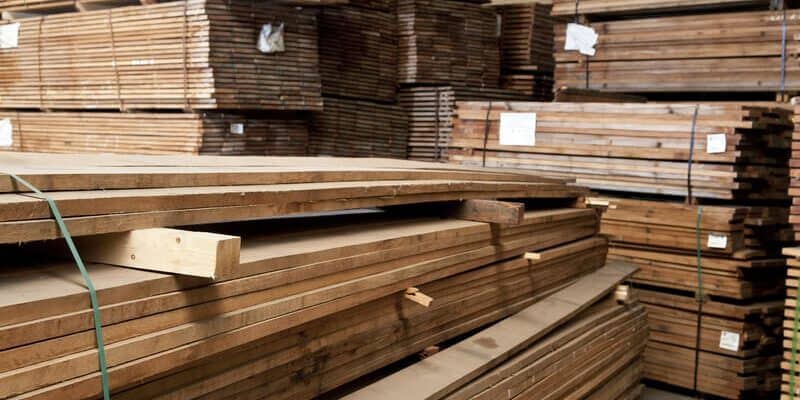How and why should you acclimate hardwood floors. Let us answer some questions and tell you what you need to know about this critical step.
Congratulations, you have reached the summit of the hardwood flooring mountain! You’ve chosen your floorboards for the quality and design you desire, removed your furniture, and are just about to have your gorgeous new hardwood flooring installed.
Soon you can finally sit back and relax in your beautiful new space, enjoying the results of all that hard work.
But there is one critical step to complete before installation, and with just a bit of patience, you can ensure that your new hardwood flooring will feel right at home, adjusting and adapting to the unique environment of your home or business.
This critical step is called “acclimation”. Let’s take a quick look at this little-known phase of your flooring project and answer some of the questions about hardwood acclimation most commonly asked.
What is Acclimation?
Hardwood floor acclimation, often called “wood conditioning”, is a process of conditioning a wood floor to the environment in which it will be installed. This is done by bringing the moisture content of the wood flooring into balance with its new home.
This balance is referred to as the Equilibrium Moisture Content (EMC), where the material is neither gaining nor losing moisture. Acclimation, as we will soon demonstrate in more detail, is accomplished simply by giving your new wooden floor some time and exposure.
Why is acclimation of hardwood important?
Hardwood flooring is a hygroscopic material, meaning it’s remarkably absorbent of moisture from its environment. Attaining EMC is therefore imperative to maintaining the wood’s condition. If the moisture content (MC) is too low the wood will absorb any excess liquid causing it to expand, swell, and appear cupped.
Conversely, if the MC is too high the wood loses moisture causing it to shrink, split and crown in the middle. Acclimation, therefore, is a critical step to complete before installation to ensure the wood boards maintain their precise size and shape after installation.
How to Acclimate Hardwood - Step by Step
1. Inspect the site:
Flooring should be the final phase of any construction project. The following conditions of the site must in place prior to the delivery of wood:
- All doors and windows are properly installed and closed.
- Final grading has been performed and all drainage runs far from the building.
- Any wet building elements – such as plastering, drywall, and concrete – are complete and dry.
- There is no moisture in the basement or crawl space areas.
- The AC and heating systems are functioning well and have been for a least five days prior to delivery.
- The humidity and temperature levels have been stabilized in the building.
Having met these conditions, measurements of the humidity and temperature levels must be taken at the site using a hygrometer and thermometer.
2. Control the site’s climate for 14 days prior to delivery:
Control the household’s climate for a minimum of 14 days before delivery. Do this by leaving the floor at the median normal living conditions expected for the household.
3. Measure the MC of the delivered flooring:
Place a box of the flooring into the site room, open along its length and ends, and remove any plastic wrapping. At this point you can ensure the wooden boards fit with each other and the color and species can be confirmed with the homeowner.
Then, measure the MC of several boards from the boxes of flooring as well as the MC of the subfloor – here, be sure to adjust the setting of species on your meter. A subfloor that has a moisture content of below 12% is ready. However, the moisture content in a subfloor and flooring in most situations must be within two percent of each other to start the installation. The only exception is for ultra-thin hardwood flooring.
4. Cross-stack all boxes:

Arrange all wooden boards as shown in the image below.
Completion:
The boards are completely acclimated when they reach EMC.
FAQ about Acclimating Hardwood Floor
How long does it take for hardwood flooring to acclimate?
Acclimation times differ by species and product based on how they relate to the environment they are acclimating inside of. Generally, they should acclimate for a minimum of three days.
Can hardwood flooring acclimate in its box?
Hardwood flooring can acclimate in the box, although this will require more time due to the lack of airflow. Factors affecting how long the hardwood flooring will take to acclimate when in the box include the site’s climate, the amount of wrapping and how the wood is stacked.
What happens if you fail to acclimate your flooring?
Poor acclimation of hardwood flooring may lead to excessive expansion, dimensional warping, shrinkage, or structural damage.
What is the best level of humidity for hardwood floors?
For lots of reasons, fall is the best time of year for hardwood floors installation. Autumn is the best time for fresh starts. Since the winter holidays is already upon us, fall is also the perfect time to handle a renovation project or more before you receive friends and family to your home during the holiday season.
What is the best level of humidity for hardwood floors?
Maintaining a humidity level between 35 to 55 percent is best to preserve hardwood flooring.













